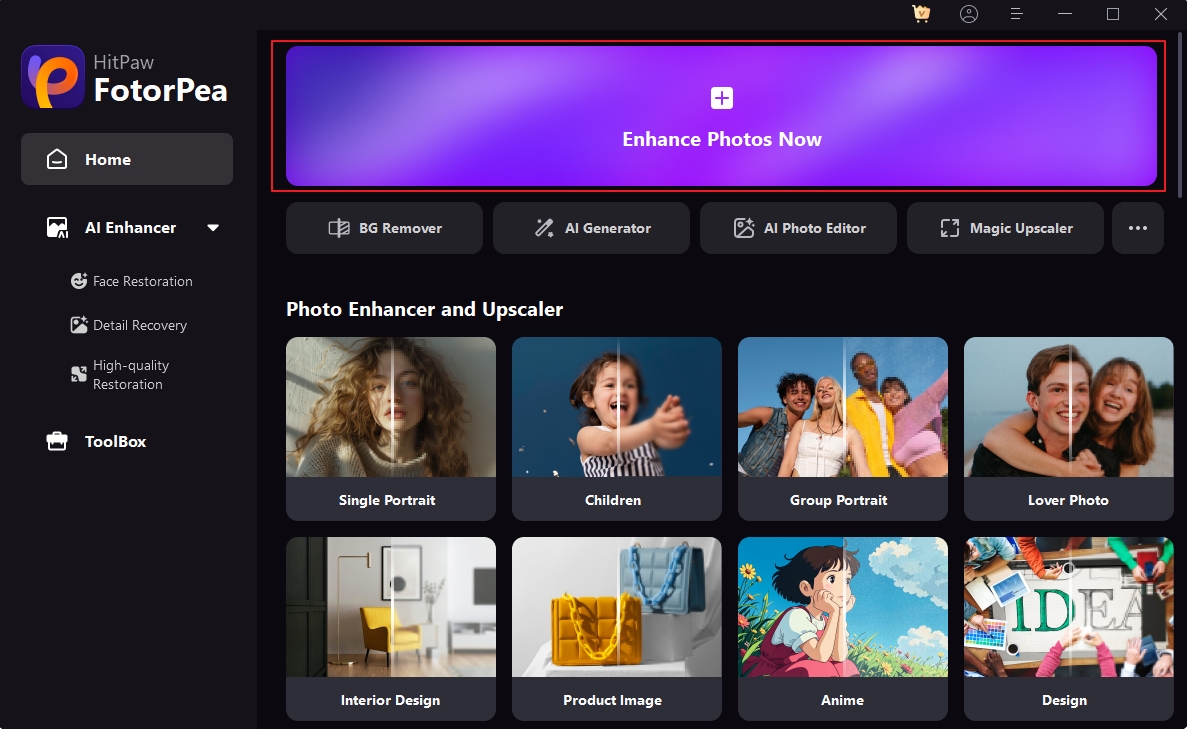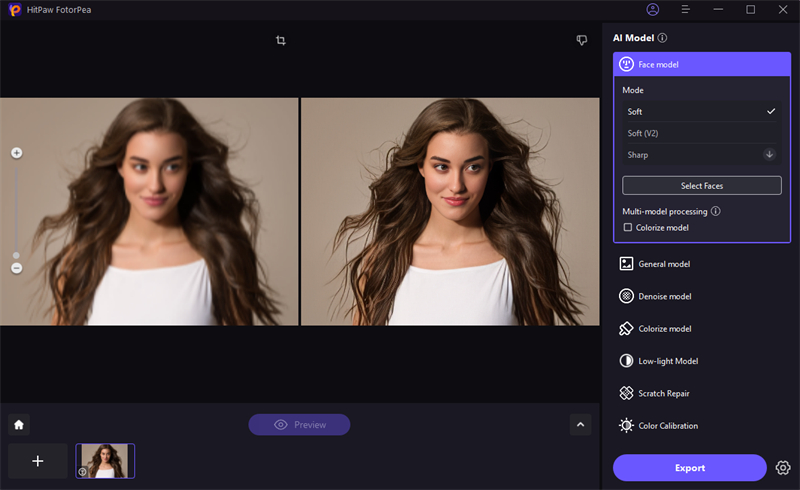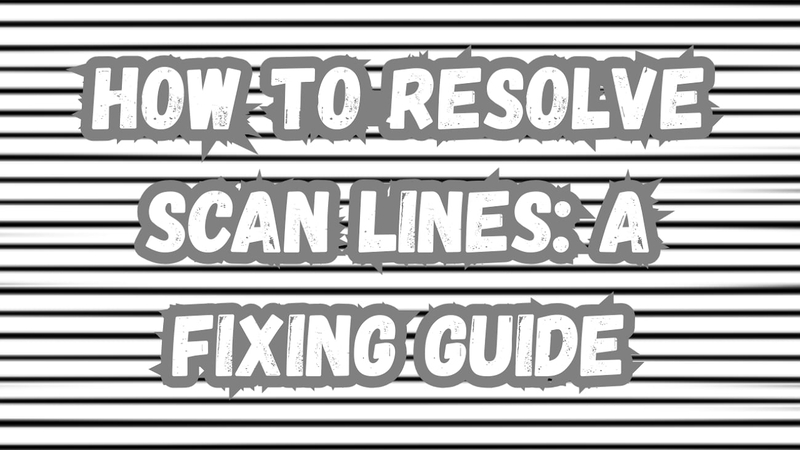Understanding DPI: 600 vs 1200 - Best Resolution You Need
DPI (dots per inch) will probably be the most crucial unit of measure when scanning pictures or printing. Do you print photographs or scan photographs? Well, then you likely have heard about DPI resolutions such as 600 DPI and 1200 DPI. So what is DPI and how do I know what resolution to use? In this article, we will compare 600 vs 1200 DPI, explore their uses, pros and cons, and guide you in making the right choice for your work.
Part 1: What Does DPI Really Mean?
DPI is an abbreviation for the number of pixels or ink dots printed per inch. DPI is really a measure of the level of detail that can be achieved on a scan or a print. Greater DPI equals greater detail, and that is where it comes in handy when you need to copy detailed patterns, texture, or fine print on photographs or documents. For instance, when you are scanning a photo at 600 DPI, the scanner is reading 600 dots of information per inch. Scanning at 1200 DPI provides more dots per inch being generated, and this provides more detail and clearer definition. So if you are scanning a picture for saving or making professional prints, understanding the difference between 600 vs 1200 DPI can be all that matters.
Part 2: 600 DPI - Good Enough or Just Basic?
600 DPI is an ordinary resolution for normal scanning and printing duties. Resolution is a compromise between quality and speed, and it is adequate for most routine needs, including:
- Typing text documents
- Frequent photo scanning for personal use
- Simple printing of images
600 DPI is adequate for normal use, but it's a compromise resolution which gives good quality without taking up too much storage space.
Pros of 600 DPI
- Efficient and Fast: 600 DPI scans are quick to process, and thus ideal for time-critical applications.
- Storage Friendly: File sizes are small, and thus storage space is conserved and simple to manage.
- Good for Everyday Scanning: It is best suited for text documents or images where detail is not required.
Cons of 600 DPI
- Limited Detail: 600 DPI will do for most use but might not be enough to offer enough detail for pro-quality prints or photographs.
- Not Ideal for Enlargement: You might notice pixelation or fuzziness on enlargement if a photo is enlarged from a scan of 600 DPI, especially with such photos that consist of very minute detail.
When it comes to 600 vs 1200 DPI, most hobbyists will find 600 DPI sufficient, but professionals working with detailed or large images for printing may require the higher resolution.
Part 3: 1200 DPI - High Detail, High Quality
1200 DPI is high resolution and generates a lot sharper and more detailed pictures than 600 DPI. It is widely used in professional applications where fine detail and precision are required, such as:
- Professional photo scanning
- Professional art scanning
- Fine art reproduction
- Precise technical or architectural drawings
1200 DPI scanners double the dots captured by 600 DPI, and thus they produce images with a very high amount of detail that show texture, colors, and subtle differences. Why 1200 DPI is suitable for anyone who requires the best is due to its:
Pros of 1200 DPI
- High Detail and Precision: Suitable for printing art, photos, and any project that requires clarity as well as texture.
- Great for Enlargements: The image is maintained in quality when enlarging photos due to the high resolution.
- Perfect for Professional Use: Used in professional areas like photography, graphic design, and artwork where finer details matter.
Cons of 1200 DPI
- Larger File Sizes: High resolution means larger file sizes, which take long to store or send.
- Slower Processing: 1200 DPI scanning could be slower, which could be a problem with tight deadlines or high volumes of documents.
- Storage and Handling: With larger file sizes comes more space, which could mean extra organization or backup strategies.
In the 600 vs 1200 DPI comparison, 1200 DPI is obviously the better option if extreme detail is required, but it comes at a cost in file size and scan rate.
Part 4: 600 DPI vs 1200 DPI: Which DPI Should You Choose?
We have now explained the characteristics of 600 DPI vs 1200 DPI. Let's discuss which resolution to use in what circumstances:
1. Text Documents
For text files, 600 DPI is typically more than enough. Scanning a blank page of text does not require too much detail, and 600 DPI will provide readable, readable text without too much file bloat. Scanning at 1200 DPI for text is not necessary, and it will only be used to make files larger without improving reading significantly.
2. Photo Prints
Where photographs are concerned, the choice between 600DPI vs 1200DPI is based on the print size. For ordinary prints (5x7, 4x6), 600 DPI will suffice for home prints. If you're printing large format or wish to capture every last detail (e.g., texture or fine color gradations), 1200 DPI will make a much better print.
3. Art Scans
For printing to be done on artwork, particularly to be utilized in such areas as commercial photography or graphic design, 1200 DPI is generally the norm. Artists and designers rely on the high resolution to catch every last little nuance, such as brush strokes or pencil lines. Scanning at 600 DPI will miss these kinds of details and produce suboptimal replicas.
4. Professional Printing
In commercial printing, where the product quality is extremely high, the maximum standard is 1200 DPI. It gives rich colors, crisp details, and nothing gets lost. But for regular or office use, 600 DPI is more than enough and also means quicker processing.
5. Quality vs. Efficiency
Whereas between 600 DPI and 1200 DPI, your need for quality over speed is the deciding factor. If you need professional or large-size prints from high-definition images, use 1200 DPI. But if fast turnaround, smaller file size and storage, then use 600 DPI.
Part 5: Bonus Tip - Boost Image Quality with HitPaw FotorPea Photo Enhancer
If you're comparing 600 vs 1200 DPI and want to improve a picture you scanned at 600 DPI, HitPaw FotorPea Photo Enhancer is decent software with the capability of enhancing image quality in just a few simple clicks. HitPaw FotorPea photo upscaler can make the photo sharper; remove noise, even upsize resolution to bridge the gap in image detail that is created as a consequence of attempting to get close to 1200 DPI from an image that is scanned at 600 DPI. It's a great option for individuals who require quality output without re-scanning images.
Key Features of HitPaw FotorPea Photo Enhancer
- The best AI-enhanced image enhancer, both Windows and Mac supported.
- Boost the image resolution and quality by a simple single click.
- Deblur and denoise your images in an instant for a better look.
- Upscale and enlarge pictures without losing quality or detail.
- Employ AI tools to erase faces, remove distracting objects, and more for smooth results.
Steps to Use HitPaw FotorPea
Step 1: Download and Install HitPaw FotorPea
Visit the official HitPaw FotorPea website or click the download button below to get the official installer. Follow the on-screen instructions to complete the installation on your device.
Step 2: Upload Your Photo
Once the software is installed, launch HitPaw FotorPea and import the photo you'd like to enhance. Click on "Enhance Photos Now" to begin. The tool supports popular formats such as PNG, JPEG, JPG, WEBP, and TIFF.

Tip: Try one of the built-in sample images to instantly preview the enhancement features.
Step 3: Choose the Right AI Model
After uploading your image, click the Preview button to start processing. HitPaw FotorPea offers 9 powerful AI models, each designed for specific enhancement needs. You can mix and match models for optimal results.

Step 4: Preview and Export
Once satisfied with the enhancement, click Export to save the final image to your device.

FAQs About 600 DPI vs 1200 DPI
Q1. Is always better image quality equivalent to higher DPI?
A1. Not necessarily. While high DPI gathers more information, it is not always the better image. If the original is a bad-quality scan, scanning high DPI will not fix it. Higher DPI makes the files bigger too, which isn't always ideal for all projects.
Q2. Can I scan an image at 600 DPI to 1200 DPI?
A2. Yes, you can digitally resample a 600 DPI image to 1200 DPI, but understanding the difference between 600 vs 1200 DPI is important for maintaining image quality. But this will not add any additional detail; it just increases the resolution but not the actual quality of the image.
Q3. What is the ideal DPI to use in printing family pictures at home?
A3. For most home printers, 300-600 DPI will suffice when printing photographs. Printing 1200 DPI will not be necessary for much visual difference for tiny prints, but it might prove useful if printing large sizes or you just wish to double-check you're using maximum clarity.
Conclusion
When it comes to 600 vs 1200 DPI, the more suitable option for you will depend on your specific requirements. 600 DPI is the way to go for routine scanning, text documents, and basic photo prints. 1200 DPI is preferred for expert-grade scans, high-quality photo prints, and artwork prints. If you want your scans to be better but don't want to opt for a higher DPI, you can try special software like HitPaw FotorPea Photo Enhancer that does wonders to improve image detail with minimal effort. Lastly, regardless of whether you are using 1200 DPI or 600 DPI, it is more of finding the best balance of quality, speed, and storage that suits your project requirements.






 HitPaw Univd (Video Converter)
HitPaw Univd (Video Converter) HitPaw VoicePea
HitPaw VoicePea  HitPaw VikPea (Video Enhancer)
HitPaw VikPea (Video Enhancer)



Share this article:
Select the product rating:
Daniel Walker
Editor-in-Chief
My passion lies in bridging the gap between cutting-edge technology and everyday creativity. With years of hands-on experience, I create content that not only informs but inspires our audience to embrace digital tools confidently.
View all ArticlesLeave a Comment
Create your review for HitPaw articles